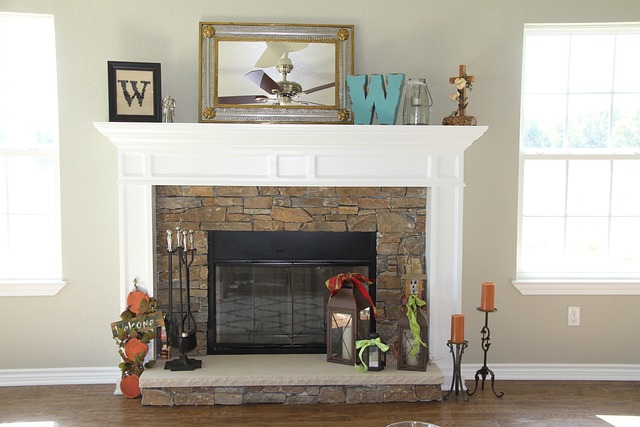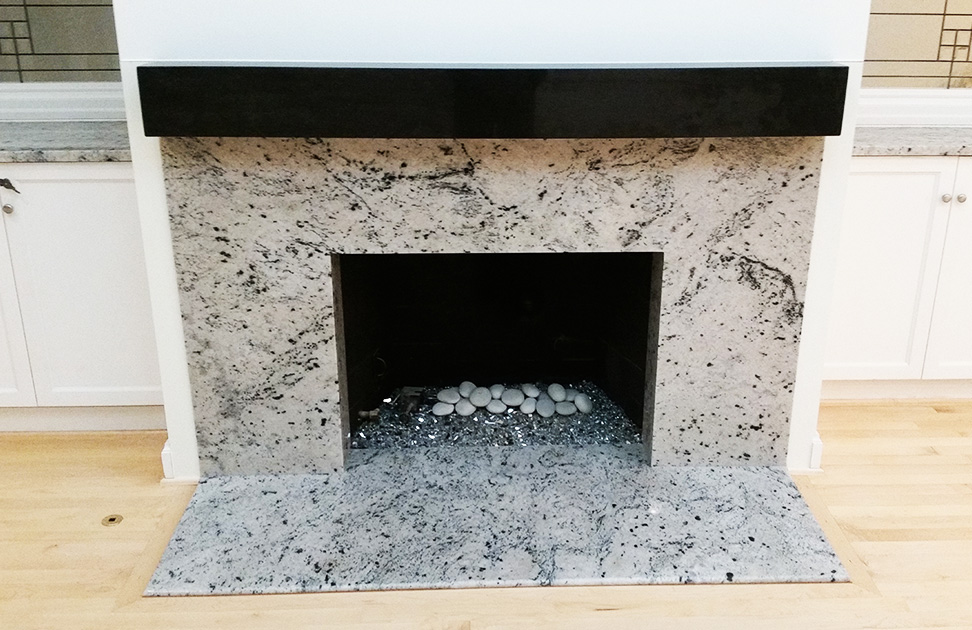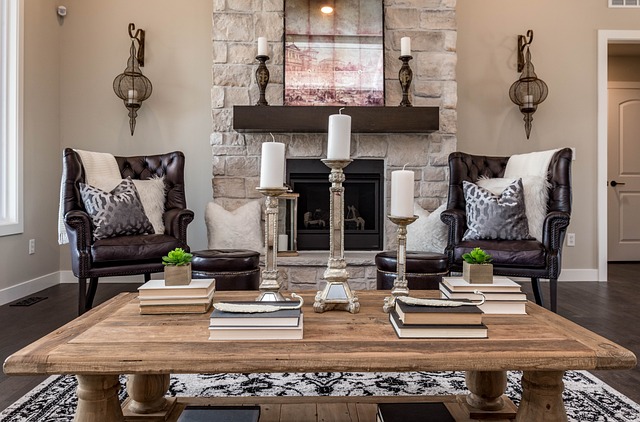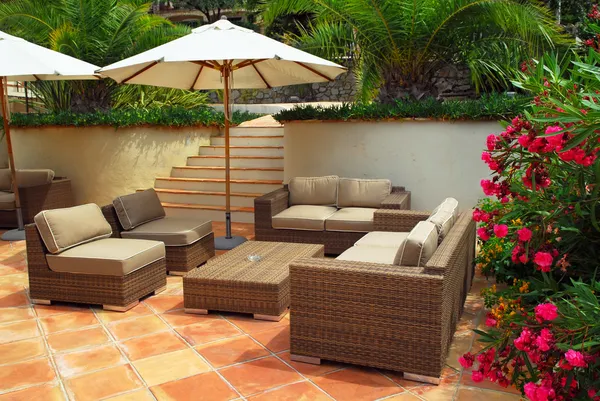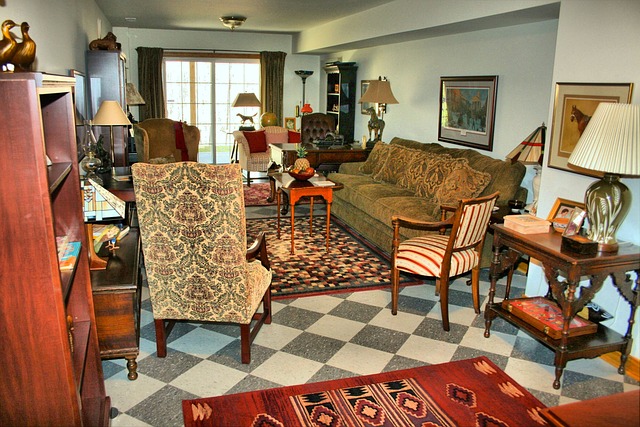What Is a Fireplace Hearth?
For thousands of years, humans depended on fire and the fireplace hearth for their survival. Today, we can’t imagine a world without smart TVs, iPhones or Wi-Fi, but before these modern luxuries existed, we relied on the fireplace hearth. For hundreds of centuries, the hearth was more than a decorative fireplace accessory.
Fireplace hearths were originally designed and used to protect our homes from the dangers associated with indoor fireplaces, but they provided more than that. The hearth is where we sat with our loved ones, told our stories and broke bread with family and friends.
Yes, humans are forever indebted to the fire hearth, and we owe a lot of our success as a civilization to this forgotten area of our homes. Over time, the fireplace hearth evolved into a decorative fireplace accessory where holiday family photos are captured and your fireplace tools are placed.
But a hearth is more than that, and it serves a real purpose in your home and for your fireplace. Regardless, the question remains – what is a fireplace hearth?
Definition of Fireplace Hearth
The definition of a fireplace hearth is: the floor of a fireplace, usually of stone, brick, or other material, often extending a short distance into a room.
That’s according to Merriam Webster’s dictionary, but fireplace industry professionals find this to be a fairly loose meaning of what a fireplace hearth is.
When you consider the many ways fireplaces have transformed and evolved over thousands of years, it’s clear to see how the definition of a fireplace hearth has been lost, misused and misinterpreted. Before electricity and indoor plumbing were widely available, the fireplace and hearth were perhaps your home’s most essential features.
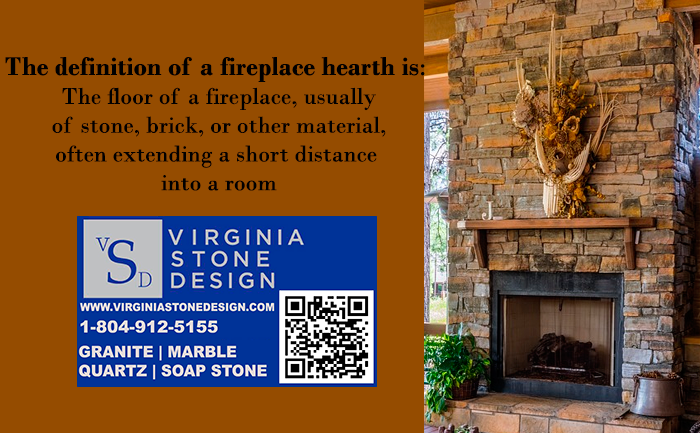
A hearth is made from non-combustible materials and sits directly in front of your fireplace opening while extending out on both sides, and sometimes in the front. Hearths come in many styles, sizes and designs, each with its own unique set of advantages and uses. Fireplace hearths play important roles in your home and serve specific purposes.
What Is a Fireplace Hearth Used For?
The fireplace hearth isn’t used much for cooking or sitting next to for warmth anymore. Since the fireplace hearth has evolved so drastically over the years, you don’t have to rely on it in the same manner as people did before.
However, the hearth is still an essential feature for any home with a fireplace installed. A fireplace hearth serves purposes such as:
-
Protecting the floor directly in front of your fireplace
-
Keeping children and pets away from the fire in a fireplace
-
Holding and mounting essential fireplace accessories
-
Completing the style and design of your home
-
Ensuring your home is meeting local fire code
There are certainly other uses for the hearth in your home, but these are all crucial functions of a fireplace hearth. When you imagine your fireplace hearth, you likely picture a large brick or stone structure surrounding the front of a fireplace. But the modern fireplace hearth comes in a range of types, heights and materials with seemingly endless combinations.
Types of Fireplace Hearths
Types of fireplace hearths are classified by height relative to the firebox or fireplace opening. Essentially, the height of your hearth determines the type of hearth you have.
If you’re considering building a fireplace hearth and want to know what your options are, the following are the four main types of fireplace hearths:
-
No hearth: this is also referred to as a hole in the wall fireplace where there is no fireplace hearth, only a firebox built into the wall.
-
Raised firebox: the fireplace hearth is below the firebox opening and extends a few inches high off the floor.
-
Flush hearth: the fireplace hearth is even or flush with the firebox opening and extends several inches or feet high off the floor.
-
Raised hearth: the raised hearth is above the firebox opening, making it seem like your firebox sits lower than it does. These can be several inches or feet in height.
The type of hearth you go with for your home will ultimately impact other aspects of your fireplace and vice versa. Different types of fireplaces have certain requirements when it comes to the type of hearth for your home.
Hearth Requirements For Fireplaces
One important thing to keep in mind when choosing a hearth for your home centers around the type of fireplace you have installed. There are different requirements for masonry and prefab fireplace hearths. Likewise, regulations are surrounding the size of your fireplace opening and the amount of clearance you need for the sides and the front of your hearth.
Masonry Fireplace Hearth Requirements
When adding a hearth to your masonry fireplace, you’ll need to have a certain amount of clearance on the sides and in front of your fireplace opening. Hearth requirements for masonry fireplaces dictate you need more space for clearance from combustibles in your fireplace. The larger the opening on your fireplace, the more clearance you’ll need, but you’ll still want to check your local fire codes and regulations when building a hearth for your fireplace.
Prefab Fireplace Hearth Requirements
The regulations are a little less strict for prefabricated fireplace hearths. If you have a prefab fireplace, then less clearance is needed between the hearth and combustibles. This is mostly due to the way the firebox is constructed using metal inserts and the added layer of protection that exist with prefab fireplaces.
Regardless of the type of fireplace installed in your home, you’ll need to follow fireplace hearth regulations and local codes when designing and building your hearth. This is for your safety and the safety of your home.
From there, fireplace hearth extensions can be installed as you like. Extensions bring the hearth further out into your living space, creating additional distance between the room and your firebox. This is useful for several reasons, mostly for the safety of your kids and pets, but also to create a cozier space for your family to enjoy. There are certain regulations for adding a hearth extension to your home, so be sure to always check your local building codes before you begin.
Common Types of Materials Used For Building a Fireplace Hearth
Aside from the styles mentioned above, you’ll find that fireplace hearths are built using a variety of materials to create unique designs and other aesthetics for your home. If you’re considering installing or replacing the hearth in your home, here are some of the common types of materials used for building:
-
Granite: granite hearths are becoming more popular choices for homeowners. Granite costs a little bit more than some materials and less than others, making it a mid-range option when it comes to affordability. Granite is a safe and suitable option for your wood-burning fireplace hearth and it comes in a variety of colors and patterns to match your home’s existing style and design.
-
Slate: using slate slabs for your fireplace hearth offers many advantages. You can choose from several colors such as green, red and multicolored or go with a sleek black slate for your fireplace hearth. Slate is best for your gas fireplace hearth or electric fireplace hearth given its tendency to crack when exposed to high temperatures – like those coming from a wood-burning fireplace.
-
Marble: marble is created from limestone and comes in several different colors and styles. Choosing a marble fireplace hearth is a smart choice, especially if you’re worried about cracking a granite slab hearth.
-
Soapstone: soapstone has a high resistance to heat, making it a solid choice for your wood-burning fireplace hearth. Similar to other types of stone, soapstone does have the potential to crack over time, especially when it’s regularly exposed to heat. Although it’s a little pricier than limestone or slate and your color options are somewhat limited, soapstone is a useful and safe material for your fireplace hearth.
-
Limestone: perhaps your most affordable option for a fireplace hearth, limestone works well for both gas and electric fireplace hearths. If you have a wood-burning fireplace, then you’ll want to reconsider building your hearth with limestone as it will crack from being exposed to high temperatures. Limestone hearths come in only a few shades of light colors such as white and tan, but their modern design is attractive to many homeowners.
-
Ceramic: the benefits of using ceramic around your fireplace are well stated here, but if you want a custom design for your fireplace hearth, ceramic is your best choice. Due to its ability to withstand extreme temperatures, ceramic tile is often used in the construction of areas such as the fireplace floor and wood-burning fireplace doors.
-
Brick: a brick fireplace hearth is a popular choice for the handy do-it-yourself homeowner. Although brick doesn’t offer the same amount of design and customization options as some of the other hearth materials, a brick fireplace hearth works well for wood-burning, gas and electric fireplaces.
-
Concrete: a concrete hearth is certainly a durable option for your fireplace. Concrete hearths are popular choices for the do-it-yourself homeowner or anyone looking to take on a home improvement project. One way to use concrete for fireplace hearths involves pouring slabs on top of a brick base to add a custom feel to your hearth. Concrete is an affordable option as you can easily pick up the supplies you need at your local home improvement store.
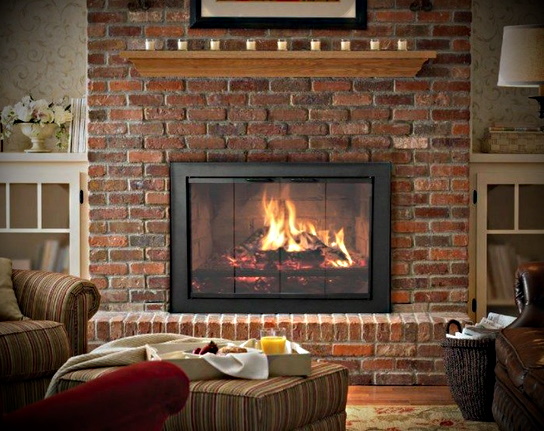 Choosing the material that works best for your fireplace hearth can be intimidating. With so many options to choose from, you may need more ideas for building your own hearth.
Choosing the material that works best for your fireplace hearth can be intimidating. With so many options to choose from, you may need more ideas for building your own hearth.
Sometimes, it’s best to understand what materials you can’t use for a fireplace hearth. Any combustible material such as wood is not a suitable choice for your fireplace hearth.
With several types of materials to choose from, finding the right fit for your hearth might seem like an impossible task.
One consideration that might help you narrow down your decision involves your mantel and fireplace surround. Many homeowners like to pair their fireplace hearth with their mantel and surround to create a uniform design for their home.
Thinking of these three areas of a fireplace as compliments to one another may help you decide on the style of hearth that suits your preferences.
How Does Your Fireplace Hearth Height Impact Doors and Other Accessories?
One thing to consider when building a fireplace hearth is how your design will impact your fireplace accessories including the doors. Your wood-burning fireplace glass doors play an important role in the function, operation and safety of your fireplace, so you’ll want to consider how your hearth height and position will influence your options.
Fireplace doors commonly sit on top of the hearth and directly in front of the fireplace opening. Different masonry fireplace hearth heights dictate the types of fireplace door fits you can install.
Inside Fit Fireplace Doors
Inside fit masonry fireplace doors sit under the lintel on most masonry fireplaces, which is why they align with the firebox floor and not the hearth. They can be installed on most hearth heights other than a raised hearth that sits above the firebox opening. If you decide to go with inside fit doors for your masonry fireplace, be sure to have exact minimum height and width measurements to ensure you have the right size doors.
Inside fit fireplace doors bolt to the sides of your firebox using two mounting brackets on either side of the doors. The brackets are screwed to the doors and then drilled into your firebox.
Overlap Fit Fireplace Doors
Overlap fit fireplace doors are an attractive option for your masonry fireplace doors.Overlap fit doors are available with four-sided or three-sided frames that mount to your lintel on top while both sides and the bottom are secured by drilling into your firebox.
You should only install four-sided overlap fit doors on a fireplace with no hearth as these types of doors overlap all four sides of your fireplace opening – top, bottom, left and right. You can install four-sided overlap fit doors on a fireplace with a raised firebox where the hearth sits lower, but you’ll need to have exact measurements for how low the hearth sits and if the bottom of the doors will fit.
Even for the handiest of DIY homeowners, this can be extremely tricky to get right so you’ll want to be certain with your measurements. Regardless, most fireplace professionals don’t recommend trying to fit your four-sided overlap fit doors onto anything but a fireplace with no hearth.
Fireplaces with a hearth will need three-sided overlap fit doors. These doors sit on top of the hearth and mount on three sides – top, left and right. If the bottom of the doors won’t reach the hearth to sit on, then you can install a riser bar to make up the difference. Once you have the bottom of your doors set, the top is attached to the lintel with clamps while the sides are secured with mounting brackets that you drill into the firebox or mount with pressure clamps.
Popular Hearth Accessories
Once your hearth has been built and you’ve decided on the right type of fireplace doors, you’ll want to add some hearth accessories that compliment your home’s style and design. You can also pair your hearth with a new fireplace surround to create a uniform space that looks beautiful and keeps your home safe.
You may be wondering about the types of accessories you need for certain styles of a fireplace hearth. You’ll also need to consider aspects such as fireplace and hearth safety as well as maintenance and cleaning and choose your accessories accordingly. Three accessories you’ll need from the start include:
- Hearth rugs
- Log holders
- Bellows
Fireproof Hearth Rugs
Adding a decorative fireproof hearth rug to your home is a wise choice for anyone with an open wood-burning fireplace or open-hearth fireplace. Popping embers and flying sparks are certainly a hearth safety concern, but adding a fireproof hearth rug is a great way to combat this danger.
Of course, you’ll always want to keep an eye on your wood-burning fires and never go to bed without first putting these out. Hearth rugs can be decorative and stylish to match the design of your hearth.
Log Holders
A picturesque wood-burning fireplace isn’t complete without a log holder to neatly pile your chopped wood. You can choose from decorative log holders to compliment your style and design. Adding a hearthside log holder is also a smart safety feature for your fireplace. The last thing you need is the threat of heavy logs rolling off your hearth and injuring kids, pets or your loved ones.
Bellows
Constantly fighting to get the fire burning hot or battling a dying fire is not an ideal way to spend free time with your family. Adding a bellow to your hearthside accessories will certainly help you get that fire started or keep one from dying too soon. Depending on your needs and preferences, you can go with a simple economical bellow or an intricate hand-crafted one.
To this point, we’ve covered just about everything you need to know about your fireplace hearth and what you can expect when deciding to build a new one. As you can see, your fireplace hearth is so much more than an optional decorative accessory for your home. Fireplace hearths come in many different types, heights and materials that all work together to create a functional and safe fireplace area for your home and loved ones. Your customization options are endless when designing your fireplace and the area around it.
Cozy Up Hearthside with Custom Accessories from Fireplace Doors Online
Be sure to check out our assortment of decorative hearth accessories designed to keep your home safe and your fireplace looking stylish. We carry a range of customizable accessories such as fireplace mesh curtains, mantels, heat deflecting hoods and, of course, fireplace doors!
For more help answering your fireplace and hearth questions, call 1 (804) 912-5155 and an experienced member of our team will be more than happy to assist you!
Source: https://www.fireplacedoorsonline.com/

